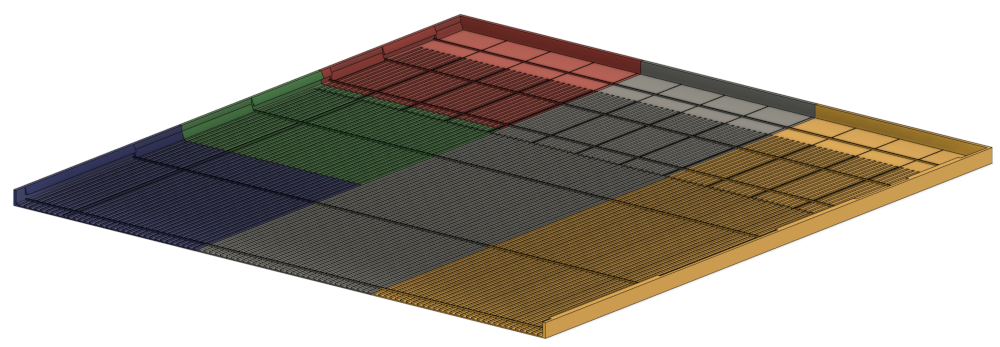Trays
I made a parametrized version of the tray (in Fusion, lhcb->layerb), so
I can quickly make A, B, C and D. The parameters correspond to the
boundaries between blocks.
(notes)
A B C D
---------------------
dd1 30 30 30 60
dd2 90 90 90 120
dd3 180 150 180 210
dd4 305 240 270 340
dd5 445 375 410 500
dd6 500 500 500 500
For A and C, we need the yellow parts, for B and D, the RGB parts.
layera_1.stl,
layera_2.stl,
layera_3.stl,
layerb_7.stl,
layerb_8.stl,
layerb_9.stl,
layerc_1.stl,
layerc_2.stl,
layerc_3.stl,
layerd_7.stl,
layerd_8.stl,
layerd_9.stl,
| 
|